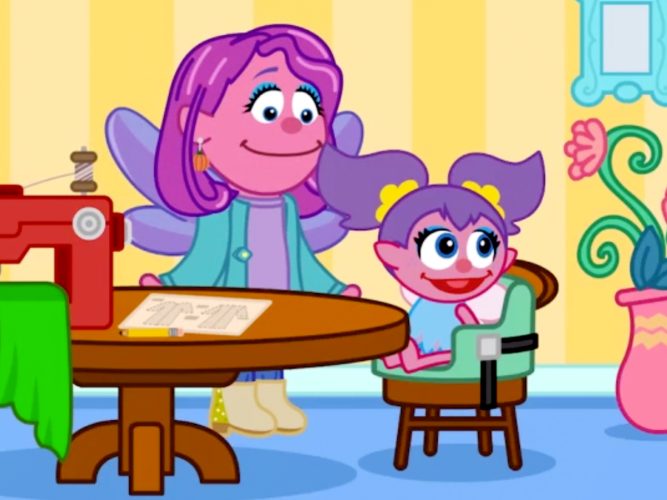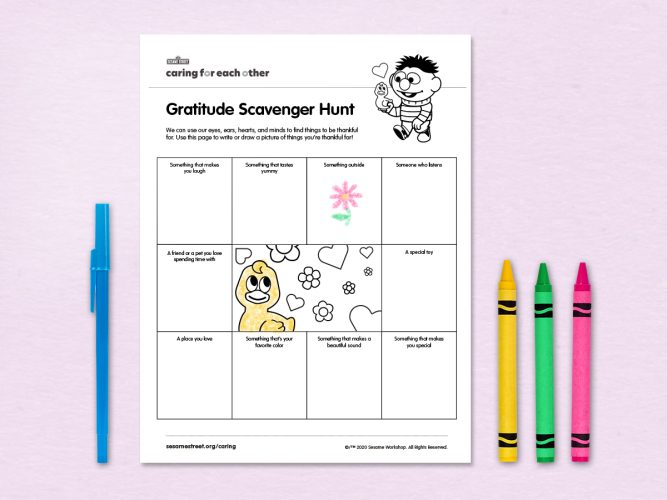
Exercising Your Gratitude Muscle
Easy strategies that help children focus on reasons to be grateful can really help them get through challenging times.
Gratitude, or thankfulness, is not just to make other people feel good. Gratitude makes you feel good—happier and more empathetic—too! Gratitude isn’t reserved for just big things, either. Feeling thankful for small things is just as powerful: a loving hug, a puppy’s soft fur, or the warming taste of a bowl of soup. The important part is to stop and notice what you have to be grateful for. When you do, you and your family will be putting yourselves in a good position to face challenges with hope and inner strength.
We are living through especially difficult times. They challenge our entire families. It’s more important than ever to have strategies on hand that encourage us to focus on the things in our lives that we’re thankful for.
It’s true that when we feel happy, it may lead us to feeling thankful, too. But it’s equally true we don’t have to wait till we feel happy in order to feel grateful. Gratitude itself leads to deeper feelings of happiness. Many studies have shown that it not only makes us happier, but also can improve our health, lead to stronger self-esteem, and may even result in getting a better night’s sleep!
But gratitude has to be learned. Young children in particular naturally think of themselves first. The good news is that gratitude is easily taught. Don’t forget that you are your child’s best example. Here are some easy strategies that can help give you a jump start to feeling stronger and more resilient in tough times. Choose the ideas that suit your family best.
Frame the day.
Make it a habit for the whole family to have “gratitude moments”—specific times during the day when you each slow down and think about what makes you feel thankful. Gratitude is a muscle, and it needs exercise to make it grow strong!
- When you first wake up in the morning: Starting off with a thankful thought helps get the day off to a positive start: “I am grateful that the sun is shining” or “I feel thankful that Grandma is going to be spending the day with us today” or even “These sweet, juicy strawberries taste amazing!”
- The dinner table is a good place to express gratitude, too. Give each family member a turn to share “the best thing about today.” You can be grateful plateful by plateful!
Enlist your child’s help.
Kids who are invited to help out with family chores soon learn that doing things takes effort–and they will begin to appreciate the efforts of others. Even if they aren’t able to do much at first, the helping habit can be started when they are small.
- Encourage your child to give you a hand. Even the youngest child can fold napkins to put on the table for a meal or put some food in the dog’s dish. Offer a small-sized shovel for your “helper” when you shovel the snow. Let him carry a small item to the car when you’re packing up for a vacation.
- Narrate the participation: “Ooh, Mom is going to really love these brownies you’re helping me bake.” “Now that you’ve helped sort the laundry, Dad will have time to read you an extra story.”
Model ways to show gratitude.
- Make sure your child sees and hears you showing your appreciation of others. Thank the servers in the restaurant you visit together; the crossing guard who helps you both cross the street; the plumber who unclogs your bathtub. It’s not only good manners you’re demonstrating; it shows your child that you are noticing, respecting, and appreciating the efforts of others. And especially, make sure you express gratitude for your child’s efforts—for example, for setting the table or putting away her toys without being asked.
- Make a “thankful jar.” Invite your child to decorate a big jar with markers, stickers, glitter, and so on. Put the thank you jar in a place of honor in your house. Each day, encourage family members to write down or draw a picture of something or someone they are thankful for and put the slip of paper in the jar. When the jar is full, make a ceremony out of pulling out the slips one by one and sharing them aloud.
- Make a gratitude collage to hang on the wall. The whole family can contribute. Put it in a place where everyone will see it and be reminded of all the things they are thankful for. Or encourage your child to keep a gratitude journal, with hand-drawn pictures or cut outs from magazines.
- You can show gratitude nonverbally, too. Make up a special family dance or a secret family hug or handshake to use when actions, not words, are preferred.
- It’s never too early to get your child into the “thank you note” habit. He can dictate the words to you if he’s too young to write or email; or she can draw pictures. It’s so important to model acknowledging the gifts and kindnesses of others.
- When a day gets hard, try a change of scenery! A walk outside is full of gifts for all the senses: the blue sky, the sweet scent of flowers, the sound of chirping birds, a friendly neighbor, even a favorite kind of car coming down the road.
Life can be hard, but it’s also wonderful!


